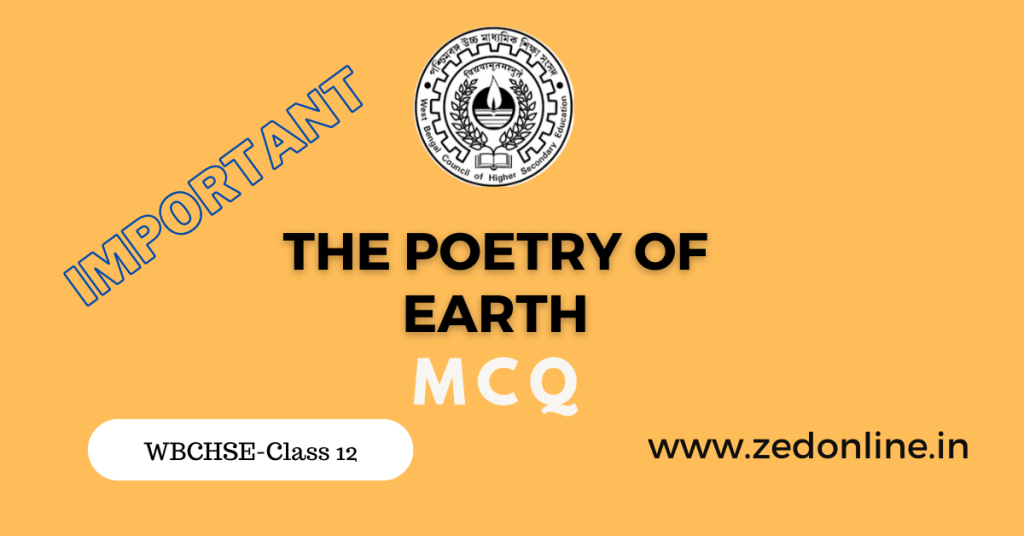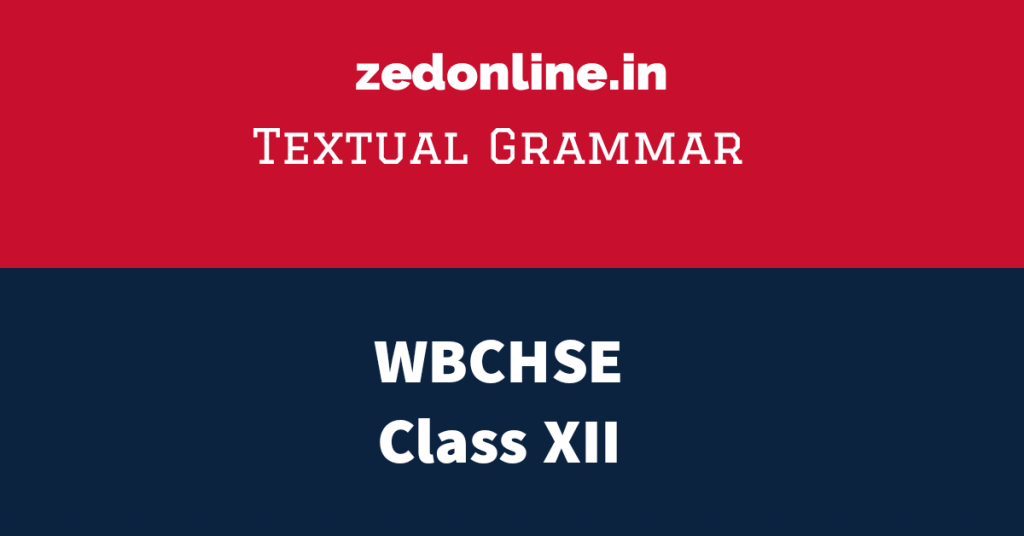WBCHSE Class 12 Economics important MCQ with answers.
We have compiled some important Economics MCQs with Answers for West Bengal Council of Higher Secondary exam (Class 12). These Model questions will help students to secure good marks in the exam.
Multiple Choice Questions
-
Which of these is not a property of Indifference curve?
a) IC slopes downwards
b) IC us concave to the origin
c) Two ICs cannot intersect with each other
d) Higher ICs represent higher levels of satisfaction
Answer: b) IC us concave to the origin
-
ICs are convex to the origin because of
a) Increasing M RS
b) Diminishing M R S
c) Law of DMU
d) Law f equi-marginal utility
Answer: b) Diminishing M R S
-
According to the Law of D M U satisfaction obtained from the consumption of each successive unit will
a) Increase
b) decrease
c) Remains the same
d) None of these
Answer: b) decrease
-
Utility is measured in terms of
a) Rupee
b) Utils
c) Ranks
d) all of the above
Answer: b) Utils
-
If there is no change in the demand for the commodity X even after a rise in its price then its demand is
a) Perfectly elastic
b) Perfectly inelastic
c) Less elastic
d) Highly elastic.
Answer: b) Perfectly inelastic
Also read: “Strong Roots” question and answers for class -12
-
Which of the following will have elastic demand?
a) Match box
b) Text Books
c) Medicines
d) Air conditioners
Answer: d) Air conditioners
-
Which of the following influence the price elasticity of demand?
a) Nature of the commodity
b) Income of the consumer
c) Availability of substitutes
d) All of these.
Answer: d) All of these.
-
If a good takes up significant share of consumer’s budget, it will be
a) Less elastic
b) Highly elastic
c) Unitary elastic
d) Perfectly elastic
Answer : b) Highly elastic
-
Which of the following statements accurately describe the relationship between AP and MP
a) AP rises when MP is above it and falls when MP is below it.
b) MP intersects AP at its minimum point.
c) AP and MP are always parallel to each other.
d) AP is always rising when MP is falling and vice versa
Answer: a) AP rises when MP is above it and falls when MP is below it.
-
When MP is zero what can you say about TP?
a) TP s increasing
b) TP is maximum
c) TP is falling
d) None of the above
Answer: b) TP is maximum
-
The period time when plant capacity can be varied is known as
a) Short run
b) Long run
c) Both a and b
d) Neither a nor b
Answer: b) Long run
-
—————–is the expansion of the Law of Diminishing Returns
a) Law of demand
b) Law of Diminishing Marginal Utility
c) Law of Equi Marginal Utility
d) Law if variable Proportion.
Answer: d) Law if variable Proportion.
-
At which phase does TP increase at an increasing rate?
a) Increasing returns to a factor
b) Diminishing returns to a factor
c) Negative returns to a factor
d) None of these.
Answer: a) Increasing returns to a factor
-
When Average product increases, Marginal product is
a) Less than average product
b) Equal to the average product
c) More than the average product .
d) None of these.
Answer: c) More than the average product .
-
What happens to AP when MP is more than AP?
a) AP rises
b) AP falls
c) AP remains constant
d) None of these.
Answer: a) AP rises
-
Transformation of input in to output is called as
a) Production
b) demand
c) Consumption
d)None of these
Answer: a) Production
-
When AP is maximum MP is equal to
a) AP
b) Zero
c) TP
d) one
Answer: b) Zero
-
AT Point of In-flexion
a) Total product is maximum
b) Average product is maximum
c) Marginal product is maximum
d) Marginal product is zero
Answer: c) Marginal product is maximum
-
Two cost curves start form the same point on the Y axis. Which are they?
a) TFC and TC.
b) TVC and TFC
c) TFC and AFC
d) AVC and AFC
Answer: a) TFC and TC.
-
The cost curve which is inversely S shaped is
a) AC
b) TVC
c) TFC
d) MC
Answer: b) TVC
-
Average Fixed Cost
a) Remains same at all levels of output
b) Increases as output increases
c) Decreases as output increases
d) Initially increases and then decreases
Answer: c) Decreases as output increases
-
All the curves except the ……………………are U shaped.
a) MC
b) AC
c)AFC
d) AVC
Answer: c)AFC
-
The shape of the TFC is
a) U shaped
b) Downward sloping
c) Rectangular hyperbola
d)Horizontal straight line parallel to the X axis
Answer: c) Rectangular hyperbola
-
MC intersects Ac at its ——————— point
a) Minimum,
b) maximum,
c) initial
d) none of these
Answer: a) Minimum,
-
AC AVC and MC are U shaped because of the operation of the
a) Law of Diminishing Marginal utility
b) Law of Diminishing Returns
c) Law of variable proportion
d) None of these
Answer: b) Law of Diminishing Returns
-
The cost which is never zero even when the production is stopped is called as
a) Supplementary Cost
b) prime Cost
c) Explicit Cost
d) Implicit Cost
Answer: a) Supplementary Cost
-
When AC is rising MC is
a) Equal to AC
b) More than AC
c) Less than AC
d) Constant
Answer: b) More than AC
-
If the AR curve is a horizontal straight line, then MR Curve will be
a) Downward sloping
b) Horizontal straight line
c) Upward sloping
d) Inversely S shaped
Answer: b) Horizontal straight line
-
AR curve is downward sloping when
a) Price falls with rise in output
b) Price initially rises at an increasing rate, then at a diminishing rate.
c) Price remains same at all levels of output
d) none of these.
Answer: a) Price falls with rise in output
-
When MR remains same, T R Increases at a
a) Constant rate
b) Decreasing rate
c) Increasing rate
d) None of these.
Answer: a) Constant rate
-
When price falls with a rise in output, then
a) MR curve is steeper than the AR curve
b) AR curve is steeper than the MR curve
c) MR and AR curve coincide in a horizontal straight line parallel to the X axis
d) None of these.
Answer: a) MR curve is steeper than the AR curve
-
What Happens to TR when MR is positive?
a) TR increases
b) TR decreases
c) TR is maximum
d) TR remains the same.
Answer: a) TR increases
33.At any level of a firm’s output MR is the revenue earned by selling
a) Entire output
b) additional unit of output
c) Both A and B
d) neither A nor B
Answer: b) additional unit of output
34.MR refers to:
a) Addition to total revenue when one more output is produced
b) Addition to total revenue when one more output is sold
c) Addition to total revenue when one ore unit of variable factor is employed
d) None of these.
Answer: b) Addition to total revenue when one more output is sold
35.When price falls with rise in output, then as quantity sold increases,
a) MR falls quickly than AR
b) MR falls slowly than AR
c) Both AR and MR fall at the same rate.
d) MR and AR do not change.
Answer: a) MR falls quickly than AR
36.All the supply curves which pass through the origin are:
a) Highly elastic
b) Unitary elastic
c) Perfectly inelastic
d) Less elastic
Answer: b) Unitary elastic
37.Which one of the following is not an essential element of supply?
a) Price of the commodity
b) Period of time
c) Willingness to buy
d) Quantity of the commodity
Answer: c) Willingness to buy
38.Which one of the following is the result of increase in the price of the factors of production?
a) Right ward shift of supply curve
b) Leftward shift of supply curve
c) Expansion of supply
d) Contraction of supply
Answer: b) Leftward shift of supply curve
39.Elasticity of supply is said to be perfectly inelastic when
a) Supply doesn’t change with a change in price.
b) There is an indefinite supply at a particular price
c) Percentage change in supply is equal to percentage change in price
d) Percentage change in supply is more than percentage change in price.
Answer: a) Supply doesn’t change with a change in price
40.The market supply of a commodity is affected by
a) State of technology
b) Number of firms
c) Government policy
d) All the above
Answer: d) All the above
41.Supply of a commodity refers to;
a. Quantity produced
b. Quantity of the commodity offered for sale
c. Purchase of raw material by the producer.
d. All of these
Answer: b. Quantity of the commodity offered for sale
42.Which one of the following is not a determinant of Market Supply?
a. Technological progress,
b. Price of inputs
c. Excise duties
d. Taste and preferences.
Answer: d. Taste and preferences.
43.If the value of Price Elasticity of Supply is equal to one , then it is called
a. Elastic b. inelastic
c. Unitary elastic
d. None of
Answer: c. Unitary elastic
46.A market with large number of buyers and sellers , selling homogeneous product at same price is called as
a) Perfect competition
b) monopoly
c) oligopoly
d) Monopolistic competition
Answer: a) Perfect competition
45.A market situation dominated by a single seller who has full control over the price is known as-
a) Perfect competition
b) monopoly
c) oligopoly
d) Monopolistic competition
Answer: b) monopoly
46.A market situation in which many buyers and sellers selling differentiated product and have partial control over the price, is termed as-
a) perfect competition
b) monopoly
c) oligopoly
d) Monopolistic competition
Answer: d) Monopolistic competition
47.Under which market form is a firm a price maker?
a) Monopoly)
b) Perfect competition
c) oligopoly
d) Monopolistic competition
Answer: b) Perfect competition
48.A market structure in which there are few large sellers who sell either homogeneous or differentiated goods is –
a) Monopoly)
b) Perfect competition
c) Oligopoly
d) Monopolistic competition
Answer : c) Oligopoly
49.In which market form/s is there product differentiation?
a)Monopolistic competition market and oligopoly market.
b) Monopoly
c) Perfect competition.
d) All of these.
Answer: a)Monopolistic competition market and oligopoly market.
50.An exclusive right or license granted to a company to produce a particular output under a specific technology is called as
a) Patent right
b) production right
c) output right
d) selling right
Answer: a) Patent right
51.Charging of different prices from different consumers for different units of the same product is called as
a) Price ceiling
b) price floor
c) Price discrimination
d) price equalization
Answer: c) Price discrimination
52.Under monopoly market MR curve is a
a) Downward sloping curve form left to right
b) vertical curve
c) horizontal line parallel to the X axis
d) .None of these
Answer: a) Downward sloping curve form left to right
-
Which of the following method is also called as ‘Net output method’ of measuring national income?
a. Value added method.
b. Income method
c. Expenditure method
d. All the above.
Answer: a. Value added method.
-
As per the value added method, which is not added?
a. Production for a self-production
b. Imputed rent
c. Brokerage earned by selling second hand goods
d. Sale of second hand goods
Answer: d. Sale of second hand goods
-
Sales + Change in stock is equal to
a. value of output
b. Gross sales
c. Gross values added
d. Not value added.
Answer:a. value of output
-
As a result of double counting national income is
a. Overestimated
b. Under estimated
c. correctly estimated
d. Not estimated for the year.
Answer: a. Overestimated
-
Value of output – sales is equal to
a. Net value added
b. Change in stock
c. Net exports
d. Net indirect Tax
Answer: b. Change in stock
-
Market price of the final goods and services (including depreciation) produced within the domestic territory of a country during an accounting year, is called:
a. GDP at market price
b. GNP at market price
c. GDP at factor cost
d. GNP at factor cost
Answer: a. GDP at market price
-
Which of the following is not an element of final consumption expenditure?
a.Household expenditures on food.
b. Government final consumption expenditure
c. House hold expenditure on education
d. Expenditure on raw material.
Answer: d. Expenditure on raw material.
-
Difference between closing stock and opening stock during an accounting year is known as
a.Increase in stock
b. Decrease in stock
c. Change in stock
d. None of these.
Answer: b. Decrease in stock
-
Which of the following is not a function of money?
a. A medium of exchange
b. A store of Value
c. A source of credit
d.A unit of account
Answer: c. A source of credit
-
Which one is the difficulty of Barter System?
a. Lack of double coincidence
b.Difficulty of division of goods
c. Lack of measure of value
d.All of these
Answer: d.All of these
-
Which one is included in the primary function of money?
a. Medium of exchange
b. Measure of value
c. Store of value
d.both (a) and (b)
Answer: d.both (a) and (b)
-
Which one is included in the secondary function of money?
a.Medium of exchange
b. Measure of value
c. Store of value
d.None of these
Answer: c. Store of value
-
Which of the following is M1?
a. C+DD+OD
b.Currency held with public
c. Saving deposits with post office saving bank
Answer:a. C+DD+OD
-
Which of the following is a component of money supply?
a. Demand deposit
b. Total deposit with post office
c. Net demand deposit of commercial bank
Answer: a. Demand deposit
-
When were banks nationalized in India first time?
a. 1949,
b. 1969,
c. 1970
d.1980
Answer: b. 1969,
-
What is the full form of CRR?
a. Common reserve rate
b.Cast rate rent
c. Cash reserve ratio
d.None of these
Answer: c. Cash reserve ratio
-
Which of the following is a quantitative measure of monetary policy?
a. Margin requirement
b. Moral suasion
c. Open market operation
d. All of these
Answer: c. Open market operation
-
Who supplies money in India?
a. RBI
b. Commercial bank
c. Government of India
d. None of the above
Answer: a. RBI
-
The money whose commodity value is equal to its face value is which type of money
a. Fiat money
b. Credit money
c. Full bodied money
d. Fiduciary money
Answer: c. Full bodied money
-
Who is the lender of last resort?
a. Commercial bank
b. Central bank
c. Government of India
d. None of the above
An swer: b. Central bank
-
Who formulate monetary policy in India?
a. RBI
b. Commercial bank
c.Government of India
d. None of the above
Answer: a. RBI
-
During inflation, bank rate
a. Increases.
b. Decreases
c. Neither increase nor decrease
d. None of the above
Answer: a. Increases.
-
During deflation SLR
a. Increases
b. Decreases
c. Neither increase nor decrease
d. None of the above
Answer: b. Decreases
-
Credit multiplier is equal to
a. 1/CRR
b. 1/SLR
c. 1/ERR
d. None of these
Answer: a. 1/CRR
-
Credit control means
a.Extension of credit control
b.Contraction of credit control
c. Both a and b.
d. None of these.
Answer: c. Both a and b.
-
Marginal Propensity to Consume is equal to
a. 𝛥𝑌/ΔC
b. 𝑌/C
c. 𝛥𝐶/ΔY
d. 𝐶/Y
Answer: c. 𝛥𝐶/ΔY
-
Which of the following is correct?
a. MPS+MPC=1
b. MPC=1-MPS
c. MPS=1-MPC
d. all of the above
Answer: d. all of the above
-
Of the following, what are the quantitative measures of monetary policy?
a. Repo rate.
b.Open market operations.
c. SLR.
d. All of these.
Answer: d. All of these.






